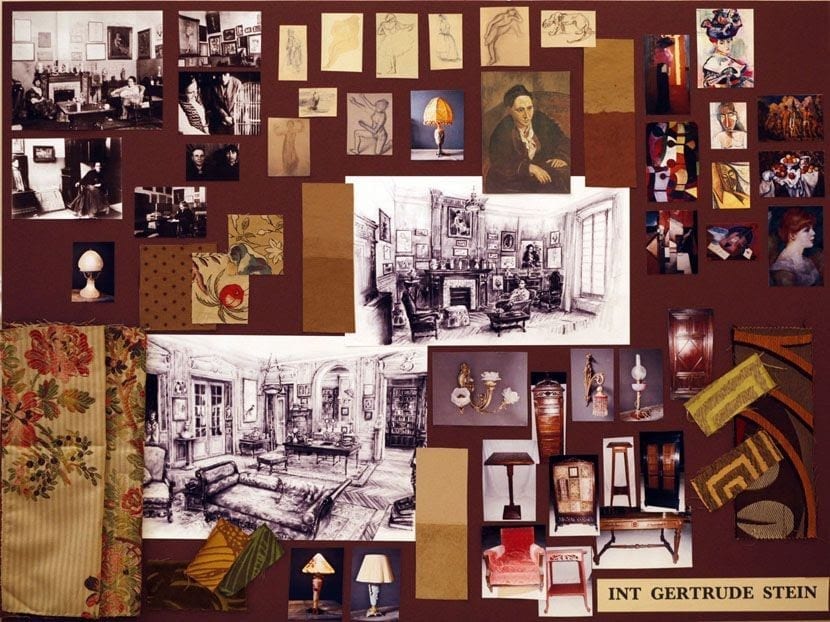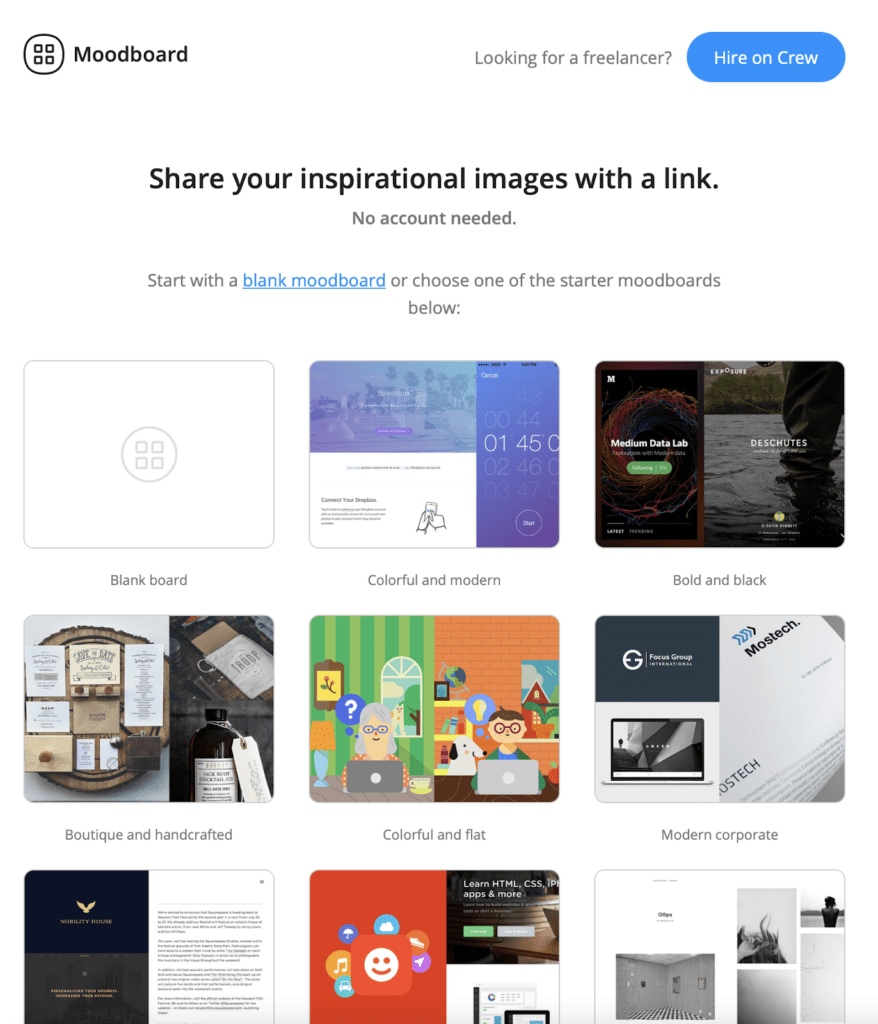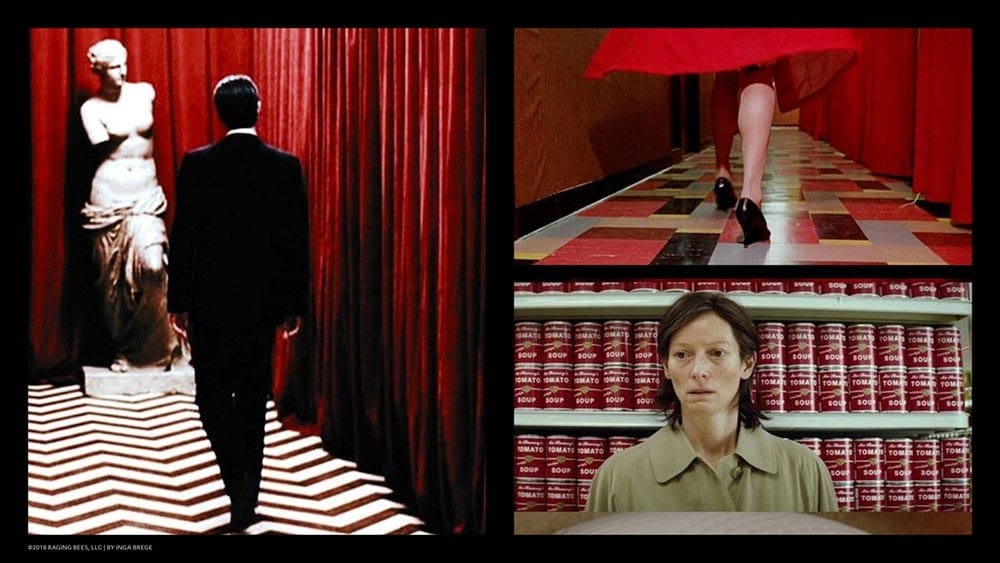What Is A Mood Board and Are They Necessary For My Film?
You finished your script, your logline, and maybe even a script treatment. Does that mean you are ready to start pulling together a crew and start working toward production? Maybe not quite yet.
When making your film, it’s important that you strive for a particular consistent look and feel. One way that you can make sure you have this is to use a mood board.
What Is a Mood Board?
Your first question is probably an obvious one: what is a mood board? After all, many filmmakers don’t use mood boards at all.
A mood board, sometimes called an inspiration board, is a collage of different visual elements that, put together, can guide you with making your film. Images, color palettes, and even videos or GIFs could all be a part of what is a mood board.

Courtesy of Vanity Fair / Pinterest
Should You Use a Mood Board?
Mood boards can be useful both for yourself and for others.
For yourself, a mood board will give you the opportunity to get your visual ideas for your film out of your head and onto paper or a screen.
For others, your mood board can improve your pitch. It can give potential investors a better idea of what your film’s production design will require.
To read more about how your mood board can help you get funding for your film, check out The Film Fund’s previous blog.
With all that said, a mood board is not absolutely necessary. In pre-production, it’s more important that you have other elements that supplement your script, like a logline, than it is that you have a mood board. One possible disadvantage to mood boards is that some filmmakers feel that they are confining. Mood boards can lock filmmakers and crew members into one idea for the production design of a film and make them less receptive to new ideas throughout production.
However, this is simply dependent upon the filmmaker. There is no major harm in making a mood board. It doesn’t even take very much time if you know how to develop a mood board.
How to Develop a Mood Board
For a long time, the main method of mood board design was to physically gather photographs and newspaper and magazine clippings, and tape them together onto a physical board. This is actually still the preferred method of mood board design for some.
However, those days are gone, as the internet has now made mood board design easier than ever before. There are many apps and services that you can use, most of which offer some free mood board templates, so that you don’t even need experience with how to develop a mood board.

GoMoodboard is a totally free and simple mood board design service. It comes with about 10 standard templates. The downside to GoMoodboard is that their mood boards can’t be annotated or edited by other online users.
The service Niice, which offers various paid versions, has a simple drag and drop interface. You can even get a Niice Google Chrome extension that allows you to store images onto Niice as you browse the web for inspiration for potential visual elements of your film.
You can even use the apps Pinterest and Canva together to make a mood board. Here is a guide on how to create a mood board using Pinterest and Canva. If you want to share your mood boards, you can use Wepik, another online tool that offers various themes and templates for creating a mood board. It also allows users to upload and share their own mood boards with others.
You should definitely consider this as an option if you’re making this mood board design with a group. Pinterest is a sharing and social media service, so you can invite online collaborators onto your mood board.
If you still prefer to make a mood board the old-fashioned way, by all means, do so. But it never hurts to at least try different methods of how to develop to a mood board, especially the free and most up-to-date ones.
When it comes to selecting photos to use in your mood board, there are plenty of online databases for royalty-free media, like the service Pond5. However, if you’re only keeping the mood board for the personal use of your film’s key creative team, you can really use any form of media at all in your mood board. This is no longer limited to moving images either. A GIF or a looping video can make its way into your online mood board if you so choose.
Other Tips For Your Mood Board

Some general things you might want to cover in your mood board design are: set styling, location, time period, fashion, mood, color palette, shot details and lighting.
Set styling elements are a key part of what is a mood board. This includes many things, as broad as the relative size and appearance of the sets appearing in your film, and as specific as particular pieces of furniture that you feel should be present in your film.
If your film takes place in a particular location or time period, you should convey that somehow through your mood board. This should be as easy as just including photos indicating that setting. If your film is set in 1960s London, include visually-fitting photos from 1960s London. Likewise, if the fashion of your characters matters in your film, you should include photos or sketches of the planned fashion choices in your mood board. This also goes for set styling. Even the small and seemingly unimportant items that are present in your set should match with your film’s time and place.
All of these elements will become important parts of your film’s production design once you start shooting. If you’d like to learn about how to keep your production design budget as low as possible, check out our previous blog on the subject.
Just like their name suggests, mood boards should also convey the mood of your story. Don’t shy away from using shots of characters from other films in your mood board. The human face is incredibly expressive, and including facial expressions in your mood board can quickly and easily communicate mood, before you even hire a single actor for your film.
A color palette may be easier to set up than you think. You can simply insert images of the desired colors you want in your film. There is a website called Adobe Color that automatically creates a color palette for an image that you insert. If you’re not experienced with making a color palette, you could simply go to Adobe Color, add any photo with the desired color palette, and then make any necessary adjustments to what the website produces.
If your film is specifically going to include a lot of wide shots or close ups (or strange shots like Dutch angles), and these shot details are especially important to the film, then examples of these shot types should end up in what is your mood board. This is also true for lighting. If you’re deliberately making more use of low-key lighting or high-key lighting in your film, this should be reflected in the images you choose for your mood board.
Conclusion
All in all, a mood board is a great way to start planning out the visual ideas that you have for your film in pre-production. Knowing how to develop a mood board and having tangible experience with it is a valuable skill.
Bringing these visual ideas to life in production can be expensive. Remember to check out our one-sentence pitch competitions for the chance to win up to $10,000.